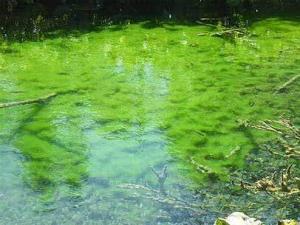Cyanobacteria, also known as blue-green algae, can pose significant health risks to humans and animals when they produce toxins. While there is considerable focus on cyanobacteria testing and treatment of cyanobacteria-contaminated water bodies, there are some lesser-known statistics that shed light on this issue:
 Increase in Occurrence: According to a study published in the journal Environmental Science & Technology, there has been a significant increase in the occurrence of cyanobacterial blooms globally over the past century. The study analyzed historical data and found that the frequency of cyanobacterial blooms has doubled approximately every decade since the 1900s, indicating a growing concern for water quality. (Source: Paerl, H.W. and Otten, T.G., 2013. Harmful cyanobacterial blooms: causes, consequences, and controls. Environmental science & technology, 46(13), pp. 7736-7742.)
Increase in Occurrence: According to a study published in the journal Environmental Science & Technology, there has been a significant increase in the occurrence of cyanobacterial blooms globally over the past century. The study analyzed historical data and found that the frequency of cyanobacterial blooms has doubled approximately every decade since the 1900s, indicating a growing concern for water quality. (Source: Paerl, H.W. and Otten, T.G., 2013. Harmful cyanobacterial blooms: causes, consequences, and controls. Environmental science & technology, 46(13), pp. 7736-7742.)- Underreporting of Cases: It is estimated that a significant number of cyanobacteria-related illnesses go unreported each year. According to the Centers for Disease Control and Prevention (CDC), only a fraction of illnesses associated with harmful algal blooms (HABs) are reported, suggesting that the true extent of the public health impact may be underestimated. This underreporting can complicate efforts to fully understand the scope of the problem and implement effective management strategies. (Source: Centers for Disease Control and Prevention (CDC). (2020). Harmful Algal Blooms (HABs) and Drinking Water: Frequently Asked Questions. https://www.cdc.gov/habs/faq.html)
- Economic Impact: The economic costs associated with cyanobacteria blooms extend beyond healthcare expenses and include impacts on tourism, recreation, and property values. A study conducted by researchers at the University of Florida estimated that the economic impact of cyanobacteria blooms in Florida alone could range from $1.9 billion to $10.6 billion over a 20-year period, considering factors such as lost revenue from tourism, decreased property values, and costs associated with monitoring and mitigation efforts. (Source: Hodges, A.W., 2019. The economic impacts of harmful algal blooms in Florida: A 20-year retrospective. University of Florida, Institute of Food and Agricultural Sciences, Food and Resource Economics Department, Economic Information Report 213.)
- Effectiveness of Treatment Methods: While various treatment methods exist to mitigate cyanobacteria blooms, their effectiveness can vary depending on factors such as the species of cyanobacteria present, environmental conditions, and the treatment approach used. A study published in the journal Water Research evaluated the effectiveness of different treatment strategies for controlling cyanobacterial blooms in lakes and reservoirs. The researchers found that while physical methods such as aeration and mixing can disrupt cyanobacterial growth, biological approaches like the use of algicidal bacteria or biomanipulation (e.g., manipulating the food web) may offer longer-term solutions. (Source: Paerl, H.W. and Otten, T.G., 2013. Harmful cyanobacterial blooms: causes, consequences, and controls. Environmental science & technology, 46(13), pp. 7736-7742.)
These statistics highlight the multifaceted nature of the cyanobacteria testing and treatment challenge, underscoring the need for continued research, monitoring, and investment in effective management strategies.




